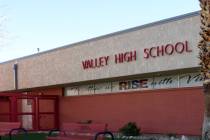Is higher education preparing workforce for tomorrow?
Most young people have initial high expectations about their futures. If you ask a class of ninth-graders how many plan to go to college after high school, almost all hands will raise.
But as they mature, circumstances change.
In a brief for the Association for Career and Technical Education: “For every 100 students who start ninth grade, only 67 will graduate from high school on time, 38 will enter postsecondary education and training immediately, approximately 26 will still be enrolled in college for their sophomore year, and only 18 will graduate from college with a bachelor’s degree within six years or an associate degree within three years. High schools have not been the place where a student is prepared for future employment.”
High schools have also become the place where a student is not prepared for college. One unintended result from requiring high schools to increase graduation rates or face funding cuts has been the lowering of standards. This further results in an increase in the number of students who require postgraduation remedial courses to qualify for college entrance.
A Jan. 30 report posted on the Huffington Post website titled “Unprepared College Freshmen Could Be the Cost of High Schools” stated: “College remediation has long been a subject of debate. It costs states nearly $4 billion annually, and opponents say remedial courses don’t even prepare student for college level work.”
The report adds that some community colleges have started to restrict admissions to students who have at least a seventh-grade proficiency level, directing them to local adult basic education classes and saving on remediation costs.
Some analysts believe that secondary schools would do a better job by offering students more focus and counseling in real-world expectations, if only they could shed the shackles of complicated formulas for success imposed on them by well-meaning but distant overseers.
At the postsecondary level, many who fund and govern colleges and universities measure success by the prestige and notoriety of the institution based on such qualitative yardsticks as funding per student, size and content of campus libraries, faculty credentials, starting salaries commanded by specific graduates, etc.
Although those measures once adequately provided output (graduates) sufficient to position the United States as the world leader in productivity, the environment is changing. To ignore, or relegate to a subordinate level, student-based outcomes that prepare graduates for the changing workforce environment will leave the country deficient in qualified employees that meet the demands of employers.
A 2011 survey conducted by FTI Consulting Inc. yielded these key findings:
nu2002Only 7 percent of hiring decision-makers believe the higher education system does an “excellent” job preparing students, while 54 percent say it does a “good” job and 39 percent say “only fair” or “poor.”
nu2002Forty-five percent of decision-makers believe that most students would be better served by an education that specifically prepares them for the workplace.
nu2002Only 19 percent say that applicants are “very prepared” with the knowledge and skills they would need for the job. Sixty-three percent say applicants are “somewhat prepared” and 21 percent say applicants are unprepared.
The recent election produced claims ad nauseam from all candidates that the creation of jobs would heal the nation and reverse the stubbornly high unemployment that plagued us since the start of the recession. Those claims make good sound bites, but they are a near-sighted or, at least, a lopsided view of the problem. The recession simply masked that we are not producing qualified employees in the numbers that the country needs to sustain economic growth.
Classified ads in many large city newspapers and Internet job boards are awash with unfilled jobs. In most cases, the job hunter either doesn’t want the job or he’s unqualified to fill it, with the latter being the predominant reason. Simple job creation won’t suffice if prospective employees lack the tools to perform. On-the-job training, although necessary, is seldom as effective as adequate preparation.
“Adding 20 million postsecondary educated workers over the next 15 years would make (the U.S.) educational attainment comparable with other developed nations, help meet the economy’s need for efficiency and reverse the growth of income inequality,” wrote Anthony Carnevale and Stephen J. Rose in “The Undereducated American” June 2011 and reported in a white paper produced for the Accrediting Council for Independent Colleges and Schools.
Economists note that until 1980 the U.S. produced postsecondary education graduates roughly in proportion to the needs of the economy, but the rate of growth has ebbed in the interim.
“The rate of increase in college-educated workers slowed from 1990 to 2000, and even more from 2000 to 2010; it has failed to keep pace with employer’s demand for skilled workers,” Carnevale and Rose reported.
The ACTE brief further observed, “Low completion rates not only harm an individual’s ability to be successful in the 21st century economy, but also slow the growth in that economy, as business and industry are not able to find the skilled workers needed to fill available jobs.
“From now until 2020, there will be no net growth in the native-born U.S. population age 25 to 54, the prime working age. Estimates are that the United States will have 15 million new jobs that require some postsecondary education by 2020 and is only on pace to produce a net gain of 3 million college-educated employees. Obviously, there are not enough students earning a postsecondary credential to ensure the economy continues to grow during this time. Meanwhile, as U.S. growth rates have slowed, international competitors are doubling and tripling the number of college graduates they produce.”
Although we lament the outsourcing of jobs overseas, we may have no one to blame but ourselves. If we don’t prepare enough American employees to fill the positions that will develop, companies have no other choice than to send jobs overseas or import foreign-born workers to fill the shortage. If colleges and trade schools are to fulfill employer expectations, they must ensure that their graduates are prepared to fill the hiring needs of the economy.
We cannot lay all of the blame for the shortage of qualified workers at the feet of higher learning, though. At least part of the problem must rest with those choosing which course of study will prepare them for reality.
A recent inquiry by the McKinsey Global Institute (“An Economy That Works: Job Creation and America’s Future,” June 2011) indicates that some of the problem stems from the mismatch between postsecondary education choices and the skills sets required for employment: “Too few … choose fields of study that will give the specific skills employers are seeking. Shortages (are projected) for nutritionists, welders, nurse’s aides … computer specialists and engineers.”
Are postsecondary institutions doing anything to combat this skills/needs mismatch? Some colleges try to keep abreast of the changes in workplace needs, although this process has evolved slowly. They provide extra assistance to students who come out of high school ill prepared to choose a career path.
For example, the University of Nevada, Las Vegas offers a variety of career services. Career counseling helps students select and/or change to a major that will focus on a chosen career option. The school provides testing that profiles a student’s interests, abilities and personality. Corporate partners give input to help guide student choices in course selection. The university also provides this service free to alumni who are members of the alumni organization.
In a recent article in The New York Times, columnist Stanley Fish reported on a panel discussion that included four college presidents titled, “The Future of Higher Education.” After the panel discussion, an audience member asked the presidents to define the purpose of higher education. The responses were “to create effective citizens,” “to become steeped in knowledge, skills and values” and “to prepare people for professional careers.” While the responses were at least honorable and at most nebulous, they do suggest the underlying problem: a system with its feet in the past while edging toward the future.
The situation is not likely to change substantially in time to avert the imminent shortage of a qualified and properly educated workforce. Our educational system has evolved over the past few centuries into a lumbering giant. A sufficient course adjustment would be like teaching an elephant to waltz. However, there are things that are being done to teach that elephant the two-step.
Many universities are allowing students to design their own majors (with guidance) to improve the quality of students who attend and increase graduation rates. Recently, for example, Drexel University in Philadelphia adopted a self-designed major at the behest of students.
The concept is catching on. According to The Wall Street Journal, more than 900 four-year institutions allow students to develop individualized majors.
In an article in The Chronicle of Higher Education dated Sept. 5, 2010, Trudy G. Steinfeld, who runs New York University’s Wasserman Center for Career Development, wrote, “Undergraduates in NYU’s Gallatin School of Individualized Study generally fare better in the job market than do classmates with traditional majors. An individualized course of study allows students to market themselves as ‘entrepreneurs and self-starters.’ If you have a company or nonprofit, you are looking for employees who have an interesting collection of skills and who can shift gears quickly between tasks, and individualized majors often fit the bill. Particularly in a tough economy, employers are trying to make sure that they get a bang for their buck, and they want versatile employees.”
UNLV gives students the opportunity to develop individualized majors in the Interdisciplinary Degree Program. According to the university, “The degree program in multidisciplinary studies is designed for the student who has clear interests and objectives that overlap colleges and/or departments, and whose objectives cannot reasonably be met through existing majors and minors.”
Individualized majors are not for everyone. The programs require a rigorous application process in which students must demonstrate a high degree of self-determination. Only a small number of students are enrolled now in self-directed or individualized majors. Most of those students select social rather than industrial majors. Further development in conjunction with employers and hiring managers could be a viable solution.
There is still a significant number of college entrants who choose a major without considering the job market four to six years down the road, although that number appears to be dwindling. Fortunately, with the guidance available to them on the Internet and/or through college counseling services, savvy college applicants are being more selective in their choices.
If there is good news, it is that today’s high school students, who are able to qualify for college, should have no difficulty finding a satisfying career five to 10 years down the road. It appears there will be plenty of opportunities for those who prepare wisely and select careers that will be in demand.
Now, more than ever, students must consider more than what they believe they want to do and can do well. Students must also build the right profiles to find satisfaction and must take advantage of programs that allow them to select the college courses that will help them get there.

















